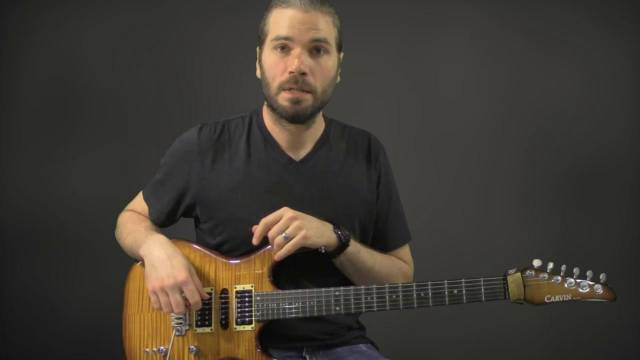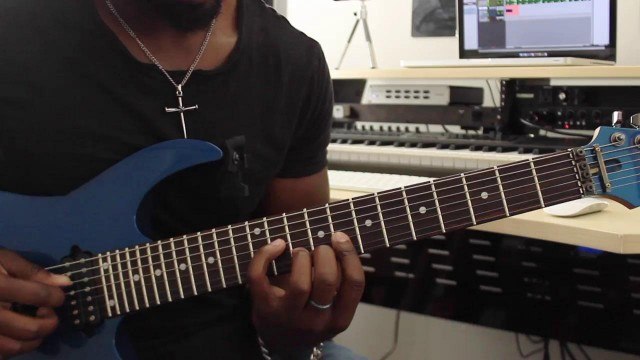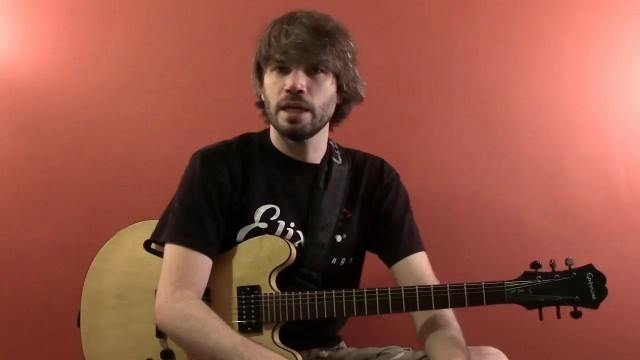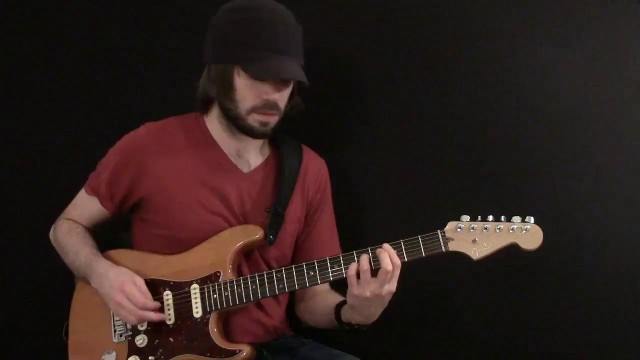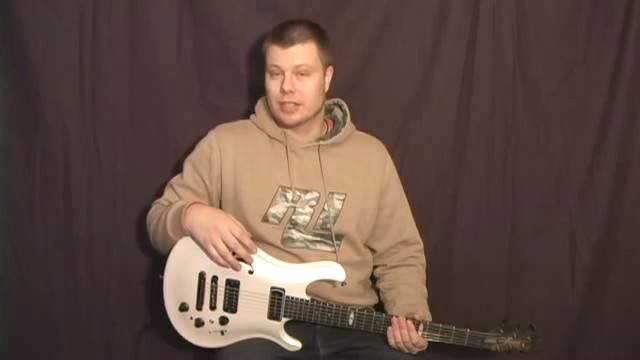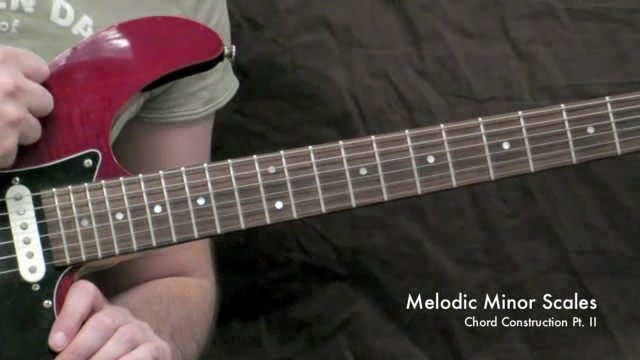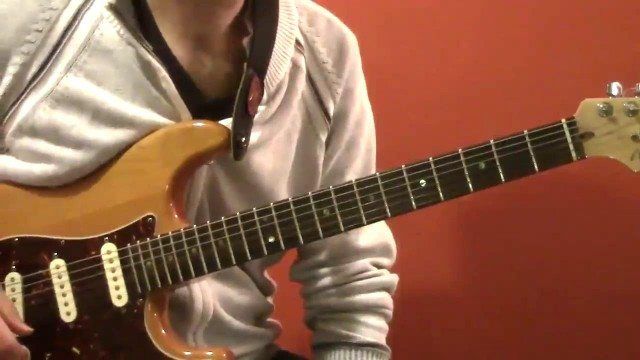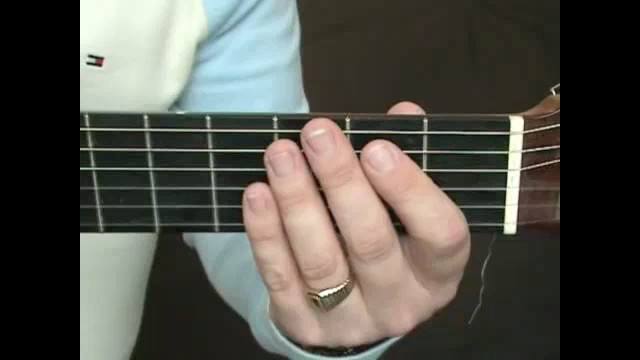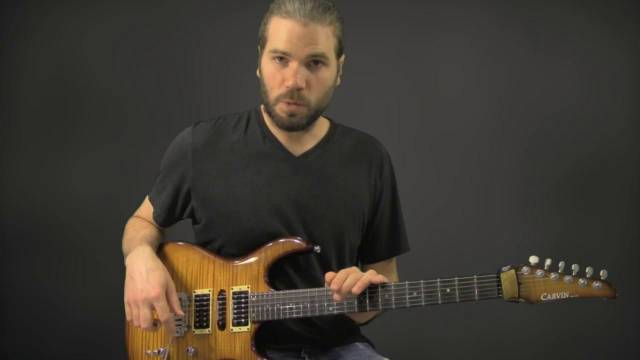Hello. Today, I bring you a way to help you build your chord vocabulary by learning how to build different chords. Since there are a multitude of different chords out there, I will break this into parts. In order to fully benefit from this tutorial, or any of my theory lessons, it is a good idea to go back and look over my lesson on intervals, lest you get confused at any point in these lessons. Intervals are the building blocks of music and knowing them will give you a better understanding of how these chords are built and will help you understand them a lot better.
The way this will go is I will show you the movable/barre forms of the chords and also any open forms of the chords that can be played (these will be included at the end with the movable/barre chord forms). I will be building the barre/movable forms on either the Low E string, the A string, or both. (I will be referring to the chords built on those strings as the "E Form" and the "A Form")
(NOTE: Remember, all the main barre chords discussed here are movable and can be used all over the neck. For example: if you have a C minor chord (A form) and want a Eb minor chord (A form), just move the main C minor chord 4 frets to Eb)
This first lesson will be a simple one and just cover building Major and Minor chords off of Major and Minor triad. First off, the main question you might have is, “What exactly is a triad?” Well, it’s a 3 note chord built off of the 1st, 3rd and 5th notes/tones/degrees of the major scale, which in this case is the C major scale which goes C D E F G A B. Now, for those of you who don’t know what exactly the C major scale is, or how it’s built (or need a refresher course), it is just an arrangement of whole steps and half steps within the 12 notes in tonal western music which goes Whole (C-D), Whole (D-E), Half (E-F), Whole (F-G), Whole (G-A), Whole (A-B) Half (B-C). The C major scale is the most important scale in music because it is the scale that all other scales/chords/arpeggios are built off of.
So now that we have this information down, we can figure out that since a C major chord is built off of the 1st, 3rd and 5th notes/tones/degrees of the major scale, it would go as follows: C (Root, 1st)-E (3rd)-G (5th). If you want to think of this intervalically, starting on the C, it would go Root, Major 3rd, Perfect 5th, because from C to E is a Major 3rd, and from C to G is a perfect 5th.
The A form of the C major chord (Chord #1), is built here having the root(C) on the A string, the 5th(G) on the D string, the root again on the G string, the 3rd(E) on the B string, and the 5th again on the high E string.
![]()
The E form of this chord (Chord #2) is built having the root on the low E string, the 5th on the A string, the root again on the D string, the 5th on the G string, and the 5th again on the B string.
![]()
A minor chord is constructed the same way as the Major chord, except to give it a minor tonality/characteristic; we lower the 3rd one half step, or a minor second, down to Eb. Now that we know this, we can see how the minor chord can be constructed, which is like thus: C(Root)-Eb(flat 3rd)-G(5th). Intervalically, this would be the Root, (C-Eb) Minor 3rd, (C-G) Perfect 5th.
The A chord form of the C minor chord (Chord #3) is built the same way as the A form C major chord form we learned about above, except to give it a minor tonality, we lowered the E (on the B string) a half step (or one fret) down to Eb.
![]()
The E chord form for the C minor chord (Chord #4) is built the same way as the E form C major chord we learned about, except to give it a minor tonality we lower the E (on the G string) down half a step to Eb.
![]()
When playing any of the barre chords in this tutorial, make sure that you keep your thumb behind the neck, towards the center of it, and at a bit of an angle so that your fingers are perpendicular to the fretboard. Be sure that you don't put too much unnecessary pressure on your thumb as well. Keep your fingers fretted, not in the exact middle of the fret, but right in front of the fret. When using your first finger to barre the entire 3rd fret, make sure you are using the fleshy left-side of your finger.
For the A form barre chord, the high E note is going to present the most problems, so make sure that your first finger is pushing down on all the strings first, then when you use the other 3 fingers to fret the other notes, you can divert your pressure a bit and push harder on the note on the high E string. When using your second, third and fourth fingers to fret, keep them right in front of the fret and make sure you are using the tips of your fingers and that your fourth finger is not muffling the high E string.
For the E-form barre chord, the B string will be the one that will cause most problems, so try using the bone on your second joint to fret that note since it seems to be in the prime spot for this to happen. For the E-form, you may need to put some added pressure on your first finger to make sure you are letting all the notes ring out clearly. That may seem uncomfortable at first, but it will soon become easier and you won't have to use as much pressure.
As with the A form, when using your second, third, and fourth fingers, make sure you are using the tips of your fingers and not the flat parts of your fingers. Also play each note individually to make sure they are all ringing out clearly on their own, then strum the chord a few times to make sure each note sounds clearly.
There you have it. This concludes the first part of many in this continuing tutorial. Below, along with the 4 main chords presented here, are all the open Major and Minor chord forms. Be sure to learn where each of the notes are in these chords to see how each chord is made up.
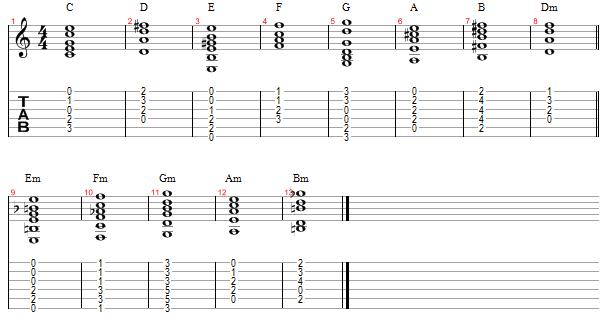
Coming up in Part 2: Augmented, Diminished, Suspended 4th and Suspended 2nd chords




